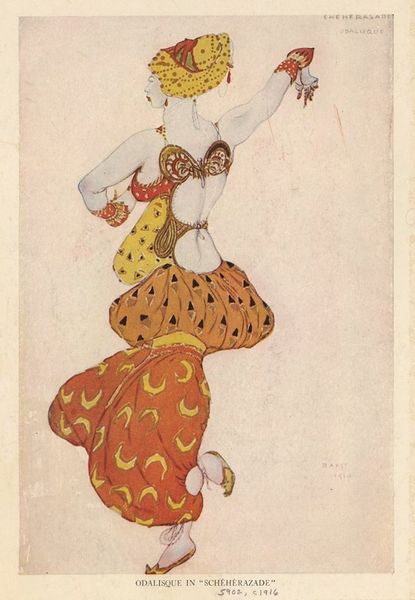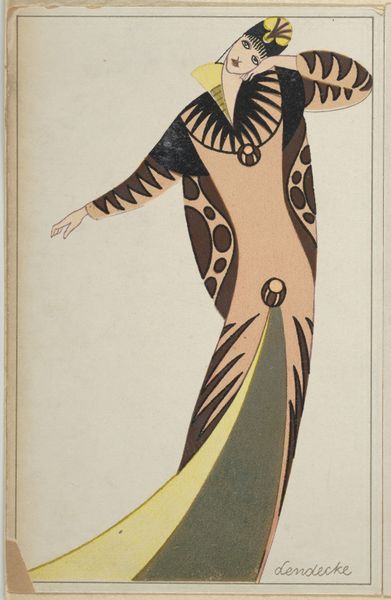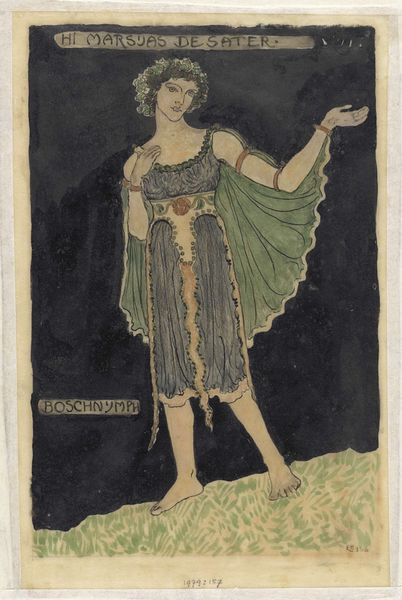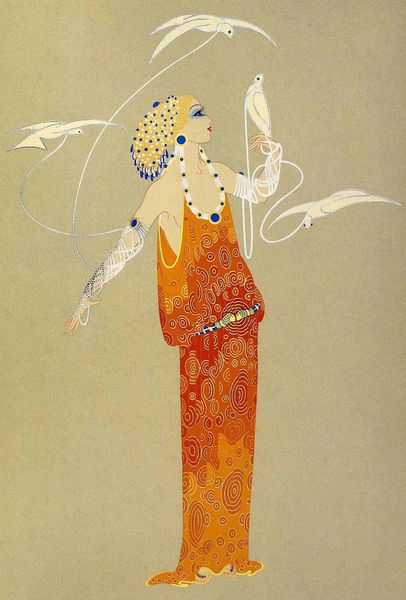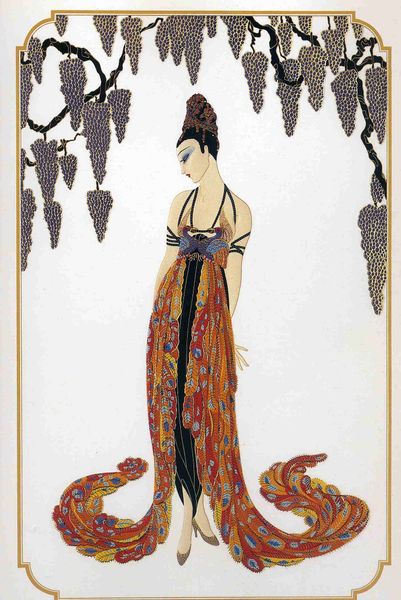
#
childish illustration
#
pastel soft colours
#
historical fashion
#
wedding around the world
#
watercolour bleed
#
watercolour illustration
#
cartoon carciture
#
cartoon theme
#
watercolor
#
bridal fashion
Copyright: Public Domain: Artvee
Léon Bakst made this costume design for a Syrian dancer in ‘Cleopatre’, using watercolor and graphite around 1909. It's a vibrant piece, and the materials really influence its appearance. The watercolor gives it a fluid, almost ethereal quality, while the graphite adds definition to the dancer's form and the intricate details of her costume. Bakst's technique captures the essence of movement and texture, and the processes he employed imbue the artwork with cultural significance, reflecting the exoticism and orientalism prevalent in early 20th-century European art and theater. The design likely involved skilled traditions of costume design, drawing from histories of fashion, theater, and cultural representation. While not traditional art materials in the strictest sense, watercolor and graphite were widely used for illustration and design. This blurring of lines between fine art and design is important, it highlights the labor and skill involved in costume creation, elevating it beyond mere utility. This piece challenges the traditional hierarchy between art and craft, emphasizing the importance of considering materials, making, and context in understanding the full meaning of Bakst's creation.
Comments
No comments
Be the first to comment and join the conversation on the ultimate creative platform.
